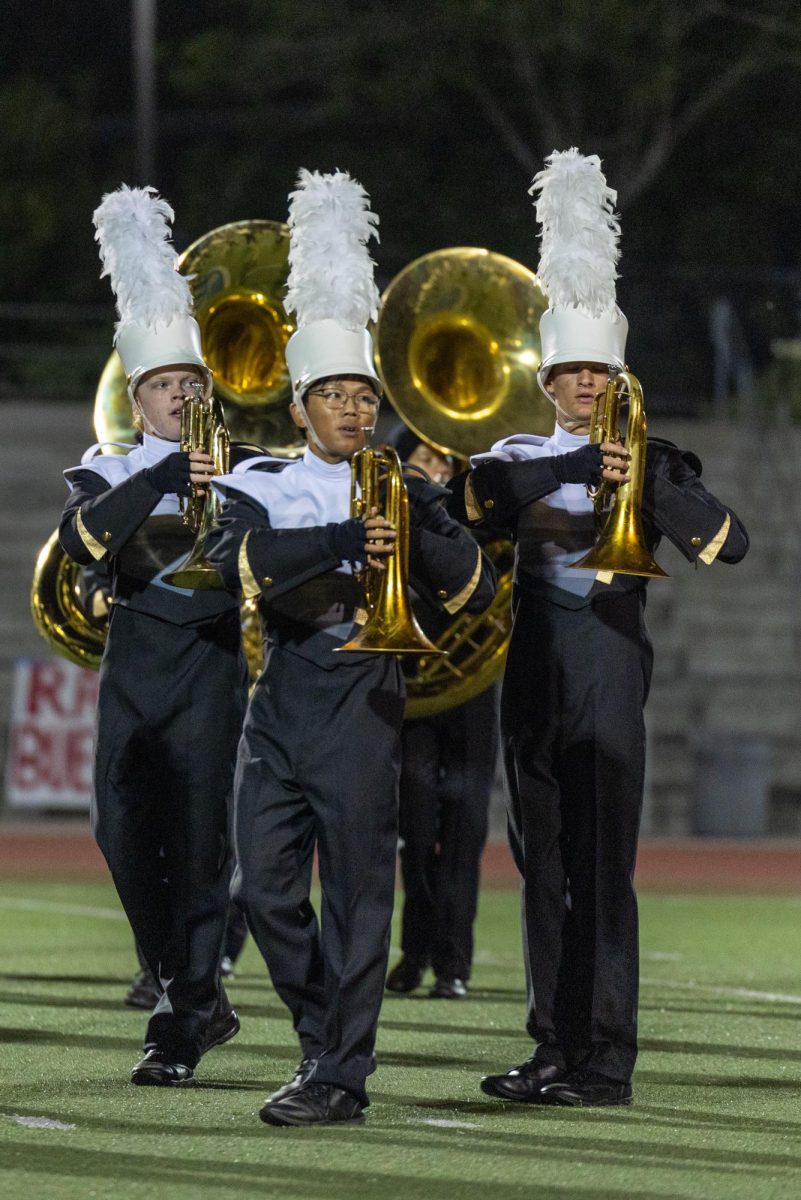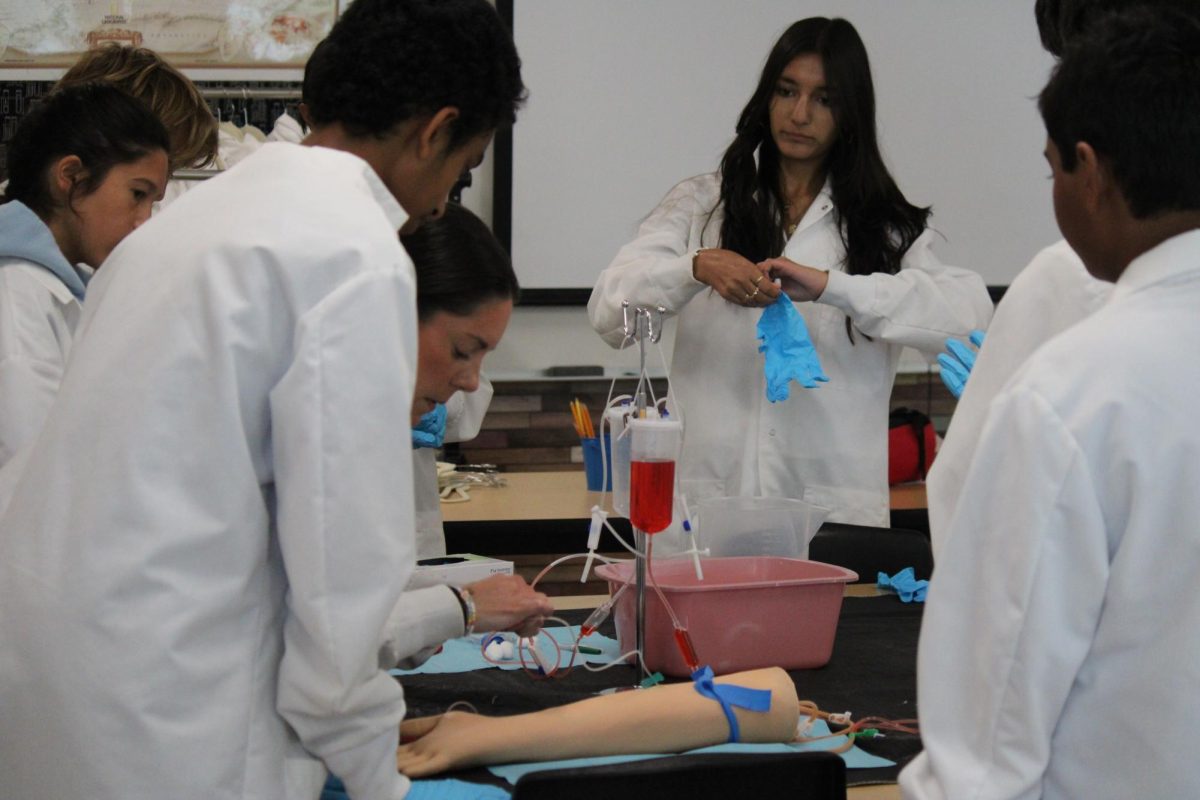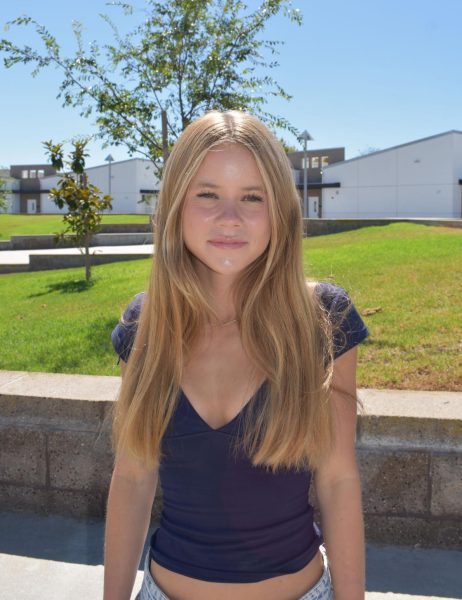This year, teacher Rachel Neumann’s first-period AP Computer Science Principles class has an asynchronous period every other Monday. Neumann had brought up this idea to Remillard post COVID.
“This is a pilot year to do some data collection to see: are students able to be successful at a similar rate [in classes with one day of asynchronous work time compared to classes without any asynchronous days]?” Remillard said.
On designated asynchronous Mondays, before homeroom, 1st period AP CSP students enter school, show the security guards their ID’s with a sticker for asynchronous days, and then proceed to scan the QR code outside the CSP room for attendance.
How students use this time is completely up to them. Some come to school between 8:35 and 10 a.m. for “open lab,” where students can get extra help or get some work done, while others use it to get some independent work done in their own space or get some extra sleep. Trevor Roland (11) has already created a routine for his extra time.
“I usually wake up 30 minutes or an hour later than I usually do, get ready for school and then depending on what work I have for the day, I’ll either get a head start on it or go out and grab some breakfast,” Roland said.
Neumann keeps the due dates and coursework across her different CSP periods the same, shifting independent work for period one to the asynchronous days.
“The expectation is that they’re working on that on their own time, really during 8:35 to 10, but I’m realistic,” she said. “I know that they’re probably doing it at midnight or one in the morning. But that doesn’t matter to me. That’s kind of the point. That it’s their own learning journey.”
Neumann said she believes this has given her students more freedom and control over their learning, fostering more independence in their coursework.
“I think the students are taking more ownership over what they do because I’m not policing or hand-holding them and saying,’ok, now you’re going to do this, now you’re going to work on this,’” Neumann said. “So I do see a little bit more maturity in how they’re approaching their coursework because they have to manage their own time and decide when they’re going to do it and still get it done.”
Dominka Vartani (11) has found that she is able to get her work done more efficiently working on her own time and in her own space.
“There’s not a teacher giving a lecture and sharing their screen and explaining everything,” Vartani said. “It’s more of like, oh, you read the directions and you can do it yourself.”
Not only have the asynchronous days fostered independence, but they have given both students and teachers a chance to catch up on work and plan for the week ahead. First-period CSP students are able to come in and make up tests that they missed without using up their lunches, Wolverine Times, or missing class time. With the extra time on asynchronous Monday’s, Neumann and first-time CSP teacher Rob Casas are able to get together and plan the course.
“[First period] is his off period,” Neumann said. “And so on those Mondays we meet and we go over some of the course content. It’s really nice to have that biweekly appointment with him on his prep and we get everything set for the next two weeks together.”
Additionally, “open-lab” has been extremely helpful for students.
“I went in about 20 minutes early for the open lab and it’s really nice,” Roland said. “[Neumann’s] there if you need help, she has all the computers up and you’re free to use whatever you want. You can do whatever you want, work on other classes, or [do] nothing. It’s really up to you. It’s a nice time to get some extra help if you need it or else just get some work done if you’re at school early.”
Remillard can foresee asynchronous classes being implemented into other courses in the future because of the high demand for online courses among students. He says there are already examples in PUSD that show how asynchronous or online classes would work that Westview’s classes can model off of.
“Rancho Bernardo has a government economics course that they do four days a week virtual online and then one day a week in person. Miss Henry [at Westview] teaches ENS 1-2 online but she’ll have it in person on Monday and Tuesday and then Wednesday, Thursday and Friday, they’ll be completely virtual. We as a campus have some ability to explore what this would look like for our learners. The biggest thing is really looking course to course, what is the need? Can it all be virtual? Do we need a balance of some in person?”
Although Remillard acknowledges that working asynchronously might not be for everyone as it is up to the individual learner to decide whether or not they should be taking a future asynchronous course.
“Even on an asynchronous day, Mrs. Neumann will have a fair number of kids who are showing up to her class just to do work in her classroom because they know that that’s better for them as a learner. We know through COVID, some kids were super successful online but some kids really struggled. A lot of it is you as a learner trying to determine ‘OK, what’s best for me?’”





![Jolie Baylon (12), Stella Phelan (12), Danica Reed (11), and Julianne Diaz (11) [left to right] stunt with clinic participants at halftime, Sept. 5. Sixty elementary- and middle-schoolers performed.](https://wvnexus.org/wp-content/uploads/2025/09/IMG_1948-800x1200.png)
